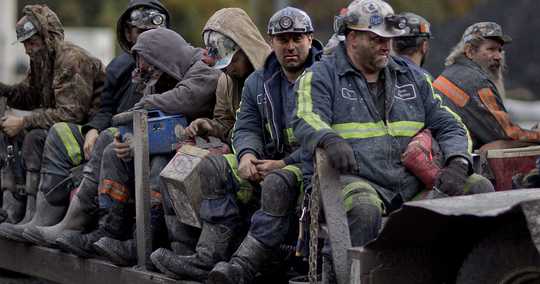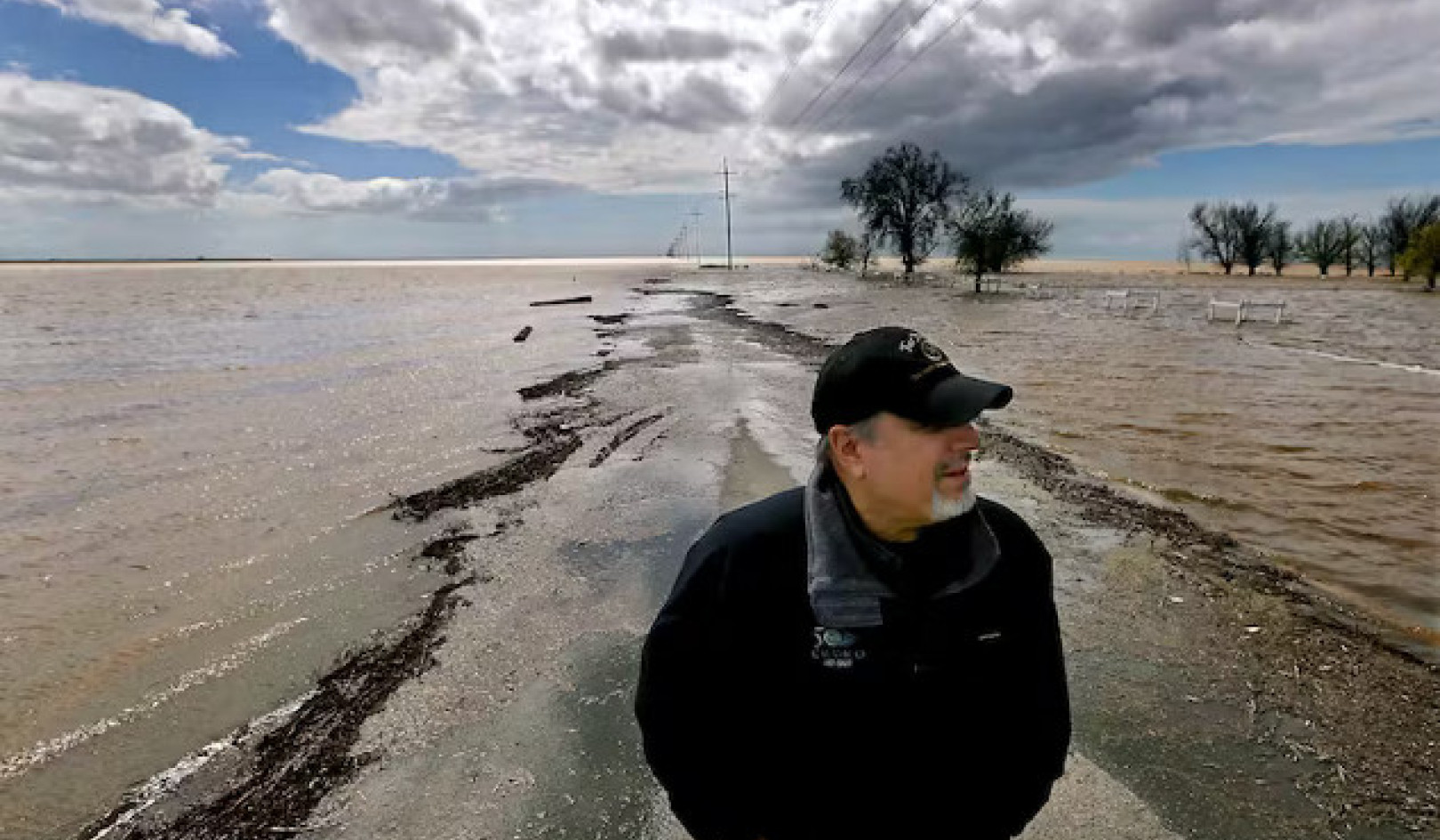
Countries across the globe are trying to wind down coal production. While this will help in the battle against climate change, those communities that have specialised in coal mining may see their local job market decline or be eliminated entirely. Most of these places have mined coal for many generations. Given long-standing traditions, such communities will inevitably resist decarbonisation unless they are given appropriate reassurances regarding their economic and social survival.
We recently researched what did – and didn’t – work in coal regions of Canada, Australia and Germany. Our aim was to identify which policies have been most successful in halting the production of coal without placing the economic burden on coal workers and communities. Our results are now published in the journal Energy Policy.
Workers in extractive industries like mining or oil are often presented as the public face of opposition to environmental protection. However, research has shown that workers in “dirty” industries do tend to support environmentally friendly policies once their immediate interests are not negatively affected.
Furthermore, there is clear evidence that environmental protection and transitioning to the low-carbon economy has the potential to create employment just as much as it can cause unemployment.
The European Trade Union Institute has developed various indicators of a “just transition” away from coal – dialogue, retraining, and so on. In our paper, we used these indicators to identify what worked in our three case study areas.
Talk to each other
We found that active dialogue with communities is key. In North Rhine-Westphalia, Germany, policy is jointly formulated by employees and employers, giving workers a voice which is largely equal to that of industrialists. The proportion of employees on supervisory boards is determined by the number of employees, which means there is one-third employee representation if there are more than 500 employees and parity on the supervisory board if there are more than 2,000 employees. This has meant coal mining has been gradually reduced and now nearly eliminated without major social or political upheaval.
In contrast, Hazelwood coal power station and adjoining mine in Victoria, Australia were closed with minimal consultation with unions or government, and after just five months notice.
Where dialogue does occur, it must be genuine and followed by action. In coal villages in Alberta, Canada, such as Forestburg or Wabamun, the industry did attempt to talk to workers and local officials but the structure of the talks was poorly defined, resulting in workers not trusting the decarbonisation processes.
Jobs after coal
We identified re-employment in “clean” industries as a way to maintain livelihoods. The German approach to re-employment has seen North-Rhine Westphalia reinvent itself as a leader in new energy technologies. Central to this has been a bottom-up approach involving co-operation between workers, communities, employers and government.

Essen, Germany, was once known for its coal. In 2017 it was made ‘European Green Capital’. Lukassek / shutterstock
In Victoria, the dominance of the coal industry has hindered the transition towards a lower-carbon economy. However, the establishment of the Earthworker Cooperative has provided a platform for various affected groups to establish sustainable enterprises such as Australia’s first worker-owned factory, making renewable energy appliances and components. This demonstrates how local communities can create employment and maintain profits within their area without relying on coal.
In Alberta, a number of production facilities are simply shifting from coal to gas. While this shift creates jobs outside the coal sector, it does little to secure employment overall, since natural gas extraction and production requires fewer workers than coal. For example, energy company TransAlta is converting its coal-fired Sundance power plant in Wabamun to natural gas, which means the overall workforce will be cut in half when the layoffs are complete.
Investing in people’s futures
Re-training allows workers to develop the necessary skills to work outside of the coal sector. In North Rhine-Westphalia, training programmes have targeted a number of different sectors including engineering, trades, business and technology. The industrial heartland of the Ruhr area – once the centre of Germany’s coal industry – has six new universities, 15 colleges and 60 research facilities since 1961. This Strukturwandel, or structural change, has developed a highly skilled workforce and demonstrates the potential for economic growth and diversification beyond coal.
Education and training has been made more accessible through subsidised retraining – in Alberta, through the Coal and Electricity Transition Tuition Voucher, and in Victoria through the Training Guarantee. This ensures that retraining does not place an additional burden on those facing redundancy.
Make former coal towns great again
Investing in infrastructure is a further means by which to secure sustainable transitions for workers and their families. In North Rhine-Westphalia and Victoria, government funding has primarily focused on roads and rail alongside investment in community infrastructure such as sports and recreational facilities. This ensures that former mining areas do not remain synonymous with coal production, pollution and socio-economic problems, and makes them a more attractive place for other industries to invest.
Moving away from fossil fuels such as coal is central to achieving emissions targets. This doesn’t have to create huge social unrest. With the goodwill of policymakers and through measures such as those we have identified, decarbonisation strategies can be developed and implemented while maintaining livelihoods for those directly affected.
About the Authors
Owen Douglas, Post-Doctoral Researcher, Environmental Policy, University College Dublin and Kieran Harrahill, PhD Researcher on the Bioeconomy and Society, University College Dublin
This article is republished from The Conversation under a Creative Commons license. Read the original article.
Related Books
Drawdown: The Most Comprehensive Plan Ever Proposed to Reverse Global Warming
by Paul Hawken and Tom Steyer In the face of widespread fear and apathy, an international coalition of researchers, professionals, and scientists have come together to offer a set of realistic and bold solutions to climate change. One hundred techniques and practices are described here—some are well known; some you may have never heard of. They range from clean energy to educating girls in lower-income countries to land use practices that pull carbon out of the air. The solutions exist, are economically viable, and communities throughout the world are currently enacting them with skill and determination. Available On Amazon
In the face of widespread fear and apathy, an international coalition of researchers, professionals, and scientists have come together to offer a set of realistic and bold solutions to climate change. One hundred techniques and practices are described here—some are well known; some you may have never heard of. They range from clean energy to educating girls in lower-income countries to land use practices that pull carbon out of the air. The solutions exist, are economically viable, and communities throughout the world are currently enacting them with skill and determination. Available On Amazon
Designing Climate Solutions: A Policy Guide for Low-Carbon Energy
by Hal Harvey, Robbie Orvis, Jeffrey Rissman With the effects of climate change already upon us, the need to cut global greenhouse gas emissions is nothing less than urgent. It’s a daunting challenge, but the technologies and strategies to meet it exist today. A small set of energy policies, designed and implemented well, can put us on the path to a low carbon future. Energy systems are large and complex, so energy policy must be focused and cost-effective. One-size-fits-all approaches simply won’t get the job done. Policymakers need a clear, comprehensive resource that outlines the energy policies that will have the biggest impact on our climate future, and describes how to design these policies well. Available On Amazon
With the effects of climate change already upon us, the need to cut global greenhouse gas emissions is nothing less than urgent. It’s a daunting challenge, but the technologies and strategies to meet it exist today. A small set of energy policies, designed and implemented well, can put us on the path to a low carbon future. Energy systems are large and complex, so energy policy must be focused and cost-effective. One-size-fits-all approaches simply won’t get the job done. Policymakers need a clear, comprehensive resource that outlines the energy policies that will have the biggest impact on our climate future, and describes how to design these policies well. Available On Amazon
This Changes Everything: Capitalism vs. The Climate
by Naomi Klein In This Changes Everything Naomi Klein argues that climate change isn’t just another issue to be neatly filed between taxes and health care. It’s an alarm that calls us to fix an economic system that is already failing us in many ways. Klein meticulously builds the case for how massively reducing our greenhouse emissions is our best chance to simultaneously reduce gaping inequalities, re-imagine our broken democracies, and rebuild our gutted local economies. She exposes the ideological desperation of the climate-change deniers, the messianic delusions of the would-be geoengineers, and the tragic defeatism of too many mainstream green initiatives. And she demonstrates precisely why the market has not—and cannot—fix the climate crisis but will instead make things worse, with ever more extreme and ecologically damaging extraction methods, accompanied by rampant disaster capitalism. Available On Amazon
In This Changes Everything Naomi Klein argues that climate change isn’t just another issue to be neatly filed between taxes and health care. It’s an alarm that calls us to fix an economic system that is already failing us in many ways. Klein meticulously builds the case for how massively reducing our greenhouse emissions is our best chance to simultaneously reduce gaping inequalities, re-imagine our broken democracies, and rebuild our gutted local economies. She exposes the ideological desperation of the climate-change deniers, the messianic delusions of the would-be geoengineers, and the tragic defeatism of too many mainstream green initiatives. And she demonstrates precisely why the market has not—and cannot—fix the climate crisis but will instead make things worse, with ever more extreme and ecologically damaging extraction methods, accompanied by rampant disaster capitalism. Available On Amazon
From The Publisher:
Purchases on Amazon go to defray the cost of bringing you InnerSelf.comelf.com, MightyNatural.com, and ClimateImpactNews.com at no cost and without advertisers that track your browsing habits. Even if you click on a link but don't buy these selected products, anything else you buy in that same visit on Amazon pays us a small commission. There is no additional cost to you, so please contribute to the effort. You can also use this link to use to Amazon at any time so you can help support our efforts.






















